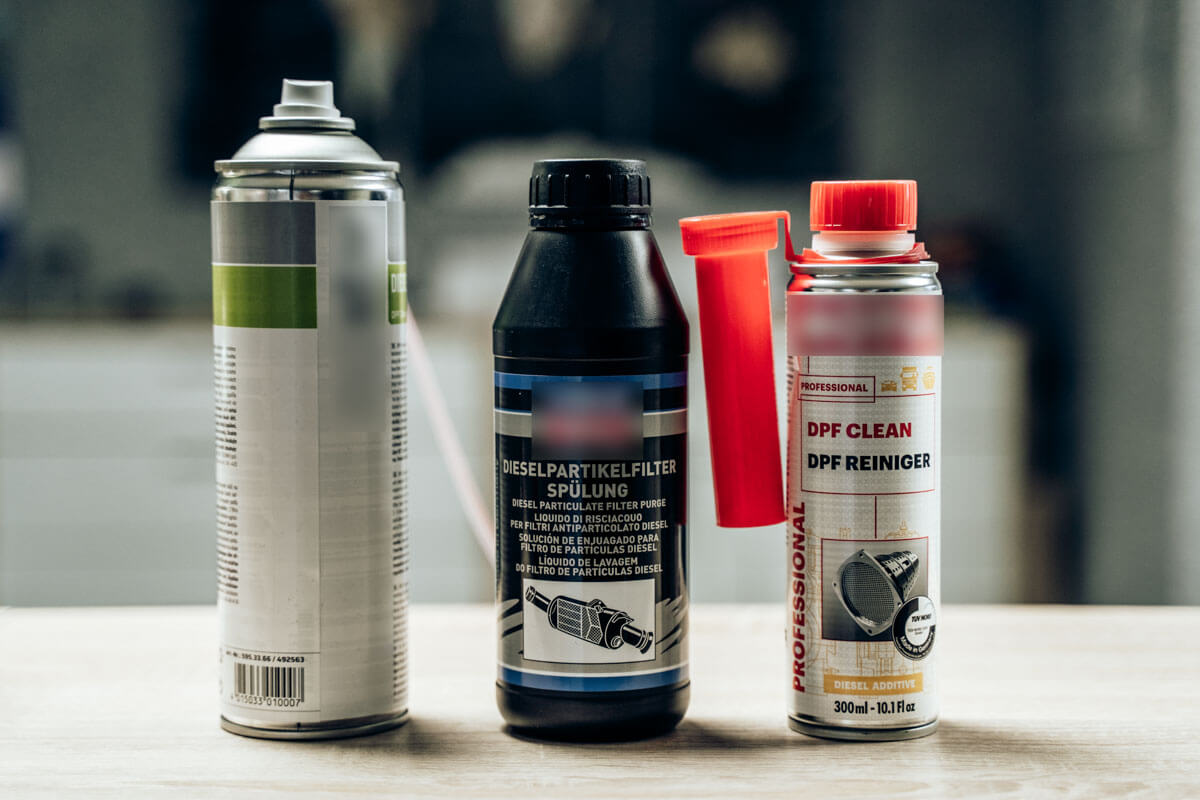
Today, there are plenty of cleaning companies for diesel particulate filters [DPF]. While in 2011 there were still 3-4 companies that developed effective cleaning techniques for diesel particulate filters in close cooperation with the manufacturers and offered them on the market, today the market looks completely different.
Many suppliers are active on the market today with different methods that do not always fall under the term “cleaning technology“. A real price dumping has developed in this sector in recent years. In this series of articles, we will show you why cheap does not always equal good, by comparing various DPF cleaning methods.
How effective are they, what are the advantages and disadvantages, and what possible dangers do individual ones entail?
Chemical DPF cleaning “The Chemical Club”
….This is a chemical cleaning fluid that is supposed to enable cost-saving cleaning of diesel particle filters in passenger cars when they are installed. Not to be confused with additives that are added to the fuel (also shown on the cover picture), but that is another topic.
Application
Using a probe as well as a pressure gun, the cleaning liquid must be applied to the surface of the filter elements inside the filter at a pressure of 6 – 8 bar.

This requires appropriate access to the inside of the filter, which is usually achieved by unscrewing the temperature or pressure sensor of the diesel particulate filter.
The probe is inserted through this opening and the cleaning fluid is injected with several pressure surges at intervals of approx. 10 seconds. In order to reach the entire surface of the filter, the probe should be moved back and forth several times during injection. After the cleaning fluid (approx. 1 L) has been injected, the filter must still be rinsed with a special rinsing fluid using the same method.
The cleaning fluid is supposed to dissolve the deposited soot and it can be burnt off during a normal regeneration. Accordingly, a “normal regeneration” is necessary after the flushing process according to the manufacturer’s instructions. (Reattach sensors beforehand)
Advantage:
- No removal of the filter necessary
- Short downtime of the vehicle due to low expenditure of cleaning time
Disadvantage:
- The cleaning fluid is injected uncontrolled (blind) into the DPF, no guarantee that the cleaning fluid reaches all chambers of the filter. Often only the first centimetres of a channel are exposed to the fluid.
- Damage to the engine due to misfiring if cleaning fluid enters the engine combustion chamber.
- Should only be carried out by specialist workshops,
- Special tool necessary, pressure gun with adjustable pressure value, min. 6-8 bar
- Danger of sooting of the filter and the filter surfaces
- During the subsequent regeneration, the soot is burnt to ash, which remains in the filter and inevitably leads to an overload / clogging of the filter at some point. Once the filter is filled with ash, no cleaning with a chemical cleaning fluid will help.
- The cleaning fluid is highly toxic and corrosive, harmful to the environment, as pollutants can be released uncontrolled into the environment during combustion.
- Experience shows that the filter is clogged again after approx. 10,000 km.
Verdict:
The use of chemical cleaning fluid can be applied to support regeneration, which burns the soot to ash.
But… the ash produced by combustion (during regeneration), remains in the filter and eventually leads to overloading/clogging.
ANY QUESTIONS?
We answer many questions in our FAQ on the subject of particle filter cleaning.
FURTHER DPF CLEANING METHODS ARE SHOWN IN THE FOLLOWING ARTICLES:
(PART 1) DPF CLEANING WITH CHEMICALS
(PART 2) DPF CLEANING WITH COMPRESSED AIR
(PART 3) DPF CLEANING WITH OVEN
(PART 4) THERMODYNAMIC CLEANING IN COMBINATION WITH LIQUID CLEANING
